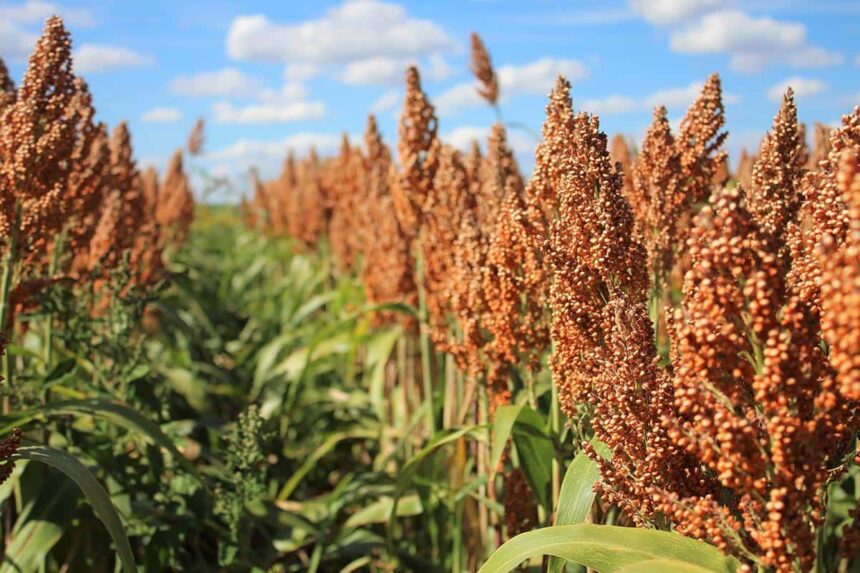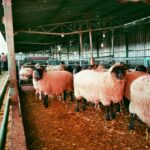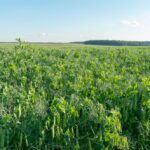Sorghum is one of the most resilient crops, making it an excellent choice for farmers in drought-prone regions. Known for its ability to withstand extreme temperatures, limited water supply, and poor soil conditions, sorghum has become a vital crop in many parts of Africa, including South Africa. With the increasing unpredictability of rainfall patterns due to climate change, sorghum offers an alternative for sustainable and profitable farming in regions prone to drought. This article provides a comprehensive guide for sorghum farming, focusing on practices that enhance productivity in drought-affected areas.
1. Understanding Sorghum’s Drought Tolerance
Sorghum belongs to the grass family and is naturally more drought-tolerant compared to other staple crops like maize. This drought tolerance is due to its deep root system, which allows it to access water from deeper soil layers. Additionally, sorghum’s small leaf size and ability to close its stomata during hot weather reduce water loss through transpiration. The crop can grow in arid and semi-arid climates, making it ideal for regions with unreliable rainfall or prolonged dry spells.
2. Choosing the Right Sorghum Variety
Selecting the right sorghum variety is crucial for success in drought-prone regions. There are several varieties of sorghum, each with specific characteristics suited to different environmental conditions. For drought-prone regions, farmers should opt for varieties that have high drought tolerance, short growing periods, and resistance to pests and diseases. Some recommended varieties for drought-prone areas include:
- Red sorghum: Known for its drought resistance and quick maturity, red sorghum varieties are excellent for areas with short growing seasons.
- Sweet sorghum: Besides being drought-resistant, sweet sorghum varieties are also valued for their high sugar content, which can be used in syrup production.
- Forage sorghum: Ideal for livestock feed, these varieties are fast-growing and can tolerate dry conditions while producing high-quality forage.
Farmers should consult local agricultural extension services to choose the best-suited variety based on their specific region’s climate and soil conditions.
3. Preparing the Land for Sorghum Planting
Soil preparation plays a vital role in ensuring that sorghum plants establish a strong root system. In drought-prone areas, it’s essential to optimize water retention in the soil. Here are some soil preparation tips:
- Tillage: Sorghum thrives in well-drained soils with good aeration. Light tillage should be done to break up soil crusts and improve root penetration. However, farmers in drought-prone areas should avoid over-tilling as it may lead to moisture loss and soil degradation.
- Organic matter: Incorporating organic matter like compost or crop residues into the soil can improve water retention and fertility. Organic matter helps to increase the soil’s ability to hold moisture, which is especially important during dry spells.
- Proper drainage: Although sorghum can tolerate dry conditions, it does not thrive in waterlogged soils. Ensure that the field has proper drainage to prevent waterlogging, which can stunt plant growth and reduce yields.
4. Planting Sorghum
The timing of planting is critical in drought-prone regions. Farmers should aim to plant sorghum at the beginning of the rainy season or when there is sufficient soil moisture. However, sorghum is relatively drought-tolerant, so it can also be planted during dry periods if irrigation is available.
- Spacing: Proper plant spacing is essential for maximizing yields in drought-prone regions. Sorghum plants need space for their roots to spread and access moisture. A row spacing of 75 cm and a plant spacing of 15-20 cm is ideal for ensuring adequate plant growth and water absorption.
- Seed depth: Sorghum seeds should be planted at a depth of 2-4 cm. This depth allows the seeds to access moisture from deeper soil layers, especially if surface moisture is limited.
5. Water Management and Irrigation
While sorghum is drought-tolerant, it still requires sufficient water during its growing period to achieve optimal yields. For regions where rainfall is unpredictable or insufficient, irrigation can be a game-changer.
- Drip irrigation: This system delivers water directly to the roots of the plants, reducing water wastage and ensuring that the plants receive adequate moisture. Drip irrigation is especially useful in areas with limited water resources.
- Rainwater harvesting: Collecting and storing rainwater during the wet season can provide an additional water source for irrigation during dry periods. Farmers can install rainwater harvesting systems, such as tanks or dams, to store water for later use.
- Mulching: Applying a layer of organic mulch around the plants helps to reduce evaporation and maintain soil moisture. Mulch also suppresses weeds, which compete for water and nutrients.
6. Fertilization and Pest Management
While sorghum is hardy and can grow in poor soils, it still benefits from proper fertilization. In drought-prone regions, maintaining soil health is critical to ensuring strong, drought-tolerant plants.
- Fertilization: Apply balanced fertilizers that contain nitrogen, phosphorus, and potassium. Organic fertilizers such as compost can also help improve soil structure and moisture retention. Fertilizers should be applied at planting and during the growing season based on soil nutrient analysis.
- Pest and disease management: Sorghum is susceptible to pests such as aphids, fall armyworms, and sorghum midge, which can damage the crop, especially during dry spells. Integrated pest management (IPM) techniques, such as crop rotation, the use of resistant varieties, and biological controls, can help reduce pest pressure without excessive reliance on chemicals.
7. Harvesting and Post-Harvest Handling
Harvesting sorghum at the right time is crucial to maintaining grain quality, especially in drought-prone areas. Sorghum grains are ready for harvest when they reach physiological maturity and the moisture content drops to about 20-25%. Harvesting too early or too late can lead to losses in yield and quality.
- Post-harvest handling: After harvesting, sorghum should be cleaned, dried, and stored properly to prevent spoilage. Farmers can use mechanical dryers or spread the grains out under the sun to reduce moisture content to safe levels for storage.
Sorghum farming in drought-prone regions offers a sustainable and profitable solution for farmers facing unpredictable rainfall patterns and water scarcity. By selecting the right varieties, optimizing soil preparation, managing water resources, and implementing effective pest management strategies, farmers can successfully grow sorghum and improve their resilience to drought. Sorghum’s drought tolerance, coupled with its versatility as both a food and fodder crop, makes it an invaluable asset for farming in regions with limited water resources.
Join 'Farmers Mag' WhatsApp Channel
Get the latest Farming news and tips delivered straight to your WhatsApp
CLICK HERE TO JOIN






